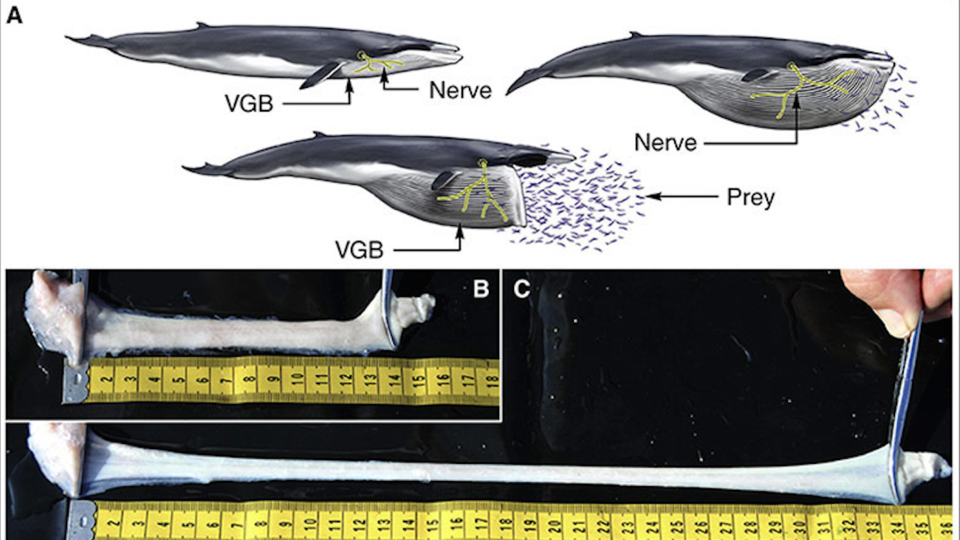Science News
Stretchy Nerves

“Like bungee cords,” is how A. Wayne Vogl and his colleagues describe the nerves of rorqual whales. It’s not a bad analogy—the transmitters in the whales’ lower jaw can double their length. Compare that to most human nerves that start to have trouble at 6-8% strain, failing at 29%.
What could call for such an evolutionary feat? It all comes down to food, of course. Rorqual whales—your blues, your humpbacks, your minkes—use baleen to filter plankton out of the sea. In the process, they swallow a tremendous amount of water, sometimes more than the volume of the whale itself! This poses a problem for the nerves that run from the whale’s belly button (yes, they have those) to their lips.
The scientists published findings in Current Biology recently indicating that the relevant nerves are bunched up in a tube of elastin, a stretchy protein common to many living things. As the whale sucks in its floating dinner, the nerves can unbundle in the stretchy tubes. Bunched along with the nerves is a sheath of less elastic collagen, which prevents over-stretching when the nerves are completely extended.
It’s a creative solution to a problem unique amongst these ocean giants. If you’re ready to learn more about how these whales eat—and get a glimpse of the skeletons that house the nerves in question—come check out our Whales exhibit here at the Academy. You can walk right up: no bungee cord required!
Image: University of British Columbia/Current Biology